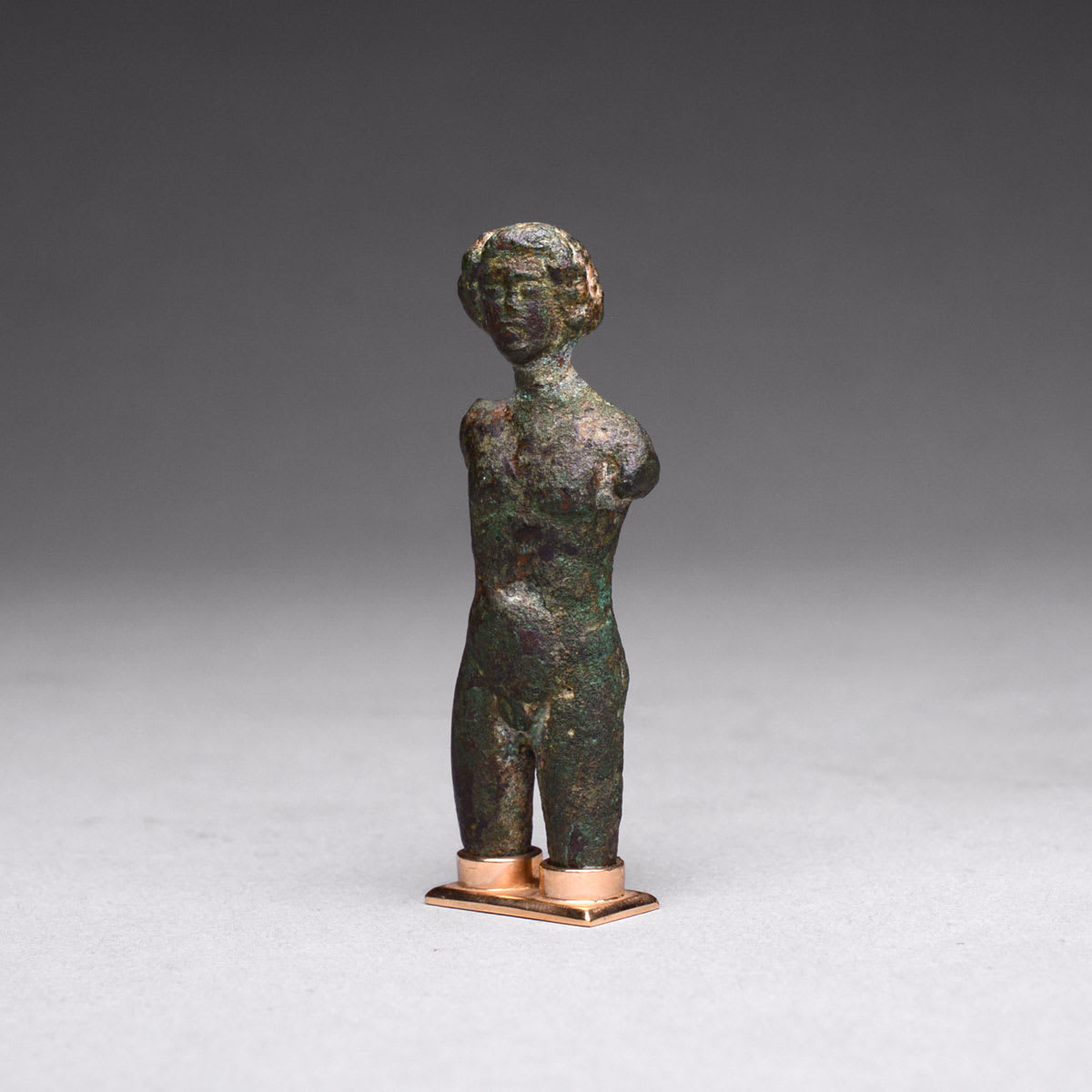Hellenistic Bronze Sculpture of a Youth, 300 BCE - 100 CE
Bronze
FJ.0734
Further images
The image of the youthful male (kouros) is one of the most enduring images of Greek art. The motif first appeared as the monumental freestanding sculptures of the Sixth Century...
The image of the youthful male (kouros) is one of the most enduring images of Greek art. The motif first appeared as the monumental freestanding sculptures of the Sixth Century BC. Some of these images were used as grave markers, while others represented the god Apollo, or were dedicated to the gods at various temple sites. As Greek art continued to develop, the figure of the nude youth continued to exert an almost mesmeric pull on the Greek imagination. Now appreciated as the height of aesthetic, the youthful athlete or warrior was the cornerstone of the Classical tradition.
This exceptional youth is depicted in the traditional contrapposto pose: legs apart, weight unevenly distributed between the hips, torso slightly twisted, shoulders relaxed, and head turned. The figure exudes the muscularity and athleticism so esteemed by the Greeks. His long, curly locks place him in the Hellenistic period, as does the slightly more Mannerist proportions of his slender body. His face stares out at the viewer with personality – his lips seem slightly parted, as though about to utter something, his eyes wide and alert.
This exceptional youth is depicted in the traditional contrapposto pose: legs apart, weight unevenly distributed between the hips, torso slightly twisted, shoulders relaxed, and head turned. The figure exudes the muscularity and athleticism so esteemed by the Greeks. His long, curly locks place him in the Hellenistic period, as does the slightly more Mannerist proportions of his slender body. His face stares out at the viewer with personality – his lips seem slightly parted, as though about to utter something, his eyes wide and alert.







